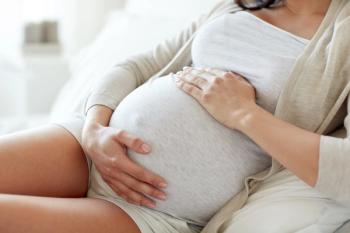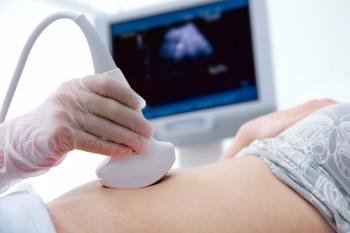
Hirsutism
Hirsutism: • Not an increase in the number of hair follices but an alteration in their character. • An increase in the transformation of the vellus to terminal hair. • {Androgens will convert lanugo & vellus hair to terminal hair}.
Hirsutism
Prof. Aboubakr Elnashar
Benha University Hospital, Egypt
Email: elnashar53@hotmail.com
Outline
• Introduction
• Definition
• Causes
Clinical evalutation
• Investigations
• Treatment
• Conclusion
Introduction
Gynecological, Endocrinological, Cosmetic & Psychogenic: {great anxiety, nature of the disease, social acceptance}
Incidence
Not known
Mediterranean> Asian
American females: 10%
European: 5%
Types of hair
Lanugo
Fetal hair
Vellus
Short, fine, Unpigemented before puberty
Terminal
Long, coarse, pigemented arises from vellus hair
Androgen at target cell (hair follicle)
Testosterone (T) ↓ 5 oe-reductase.
Dihyrtestosterone (DHT)↓
Androstanediol↓
Glucuronide↓
3 alpha androstandediol glucurondie (3 alpha AG)
Definitions
Hirsutism: Latin hirutus = shaggy, hairy
Excessive growth of terminal hair in male sexual sites.
Excessive:
Hypertrichosis
Excessive growth of Lanugo, vellus or terminal hair in non-sexual sites (James et al, 2005)
• Cong Acquired
• Localized Generalized
Hirsutism:
• Not an increase in the number of hair follices but an alteration in their character.
• An increase in the transformation of the vellus to terminal hair.
• {Androgens will convert lanugo & vellus hair to terminal hair}.
Hirsutism is a consequence of several factors.
An increase in:
1. Androgen production
2. The sensitivity of the androgen receptors at the level of the hair follicle.
Causes
A. Ovarian:
.PCOS: 90%
{hyperandrogenism, oligo-ovulation, PCO}
.Virilizing ovarina tumors
{amhenoblastoma, hilus cell tumor, lipod cell tumor, graulosa cell tumor}
.Luteoma of pregnancy
{Not true tumor but an exaggerated reaction of ovarian stroma to chorionic gonadotropins. IT is solid, usually unilateral & regress after labour}
.Ovarian dysgenesis
B. Adrenal:
• Cong adrenal hyperplasia
• Tumors
• Cushing syndrome
C. PERIPHERAL
• Idiopathic: Regular ovulation & normal androgen levels
• Insulin resistance
- HAIRAN syndrom: HyperAdnrogenic Insulin-Resistant Acanthosis Nigricans
- 5H syndrome
• Aromatase deficiency
• Gucocorticoid resistance
• Hyperprolactinema can cause an increase in DHEAS. TT with bromocriptin: dec PRL & DHEAS
Hunter, 2003
Clinical evaulation
Primary objective:
Confirm diagnosis
Determine degree
Exclude life threatening diseases
History
.Virilization, psychological
.Onset & duration:
Rapidly progressive virilization: androgen secreting tumors
.Menstrual history:
PCOS, Pregnancy
.Family history:
Hair patterns are similar in families
.Drug intake
Examination
.General:
Thyroid disease,
Cushing syndrome,
Signs of virilization,
Signs of insulin resistance e.g. acanthosis nigricans.
.Breast:
Galactorrhea {Hyperprolactineamia can be accompanied by increase in adrenal androgen}
.Pelvic:
mass
Degree if hirutism
Photography or scoring systems
a.Ferriman & Gallwey (1961):9 areas
upper lip,
chin,
chest
upper abdomen,
lower abdomen,
upper arm,
thighs
b. Macnight (1964):
divided the body into 7 areas
Face
Neck
Shoulders
Chest
Abdomen
back
Investigations
Initial laboratory investigaton
(Speroph, 2005)
1. Total testosterone:
measures the ovarian & adrenal activity.
2. 17 OHP:
an intermediate metabolite in steroidogensis in the adrenals.
DHEAS:
Good marker of Adrenal A production
Not essential
• DHES is not essential (Speroff, 2005)
1. If 17 OHP is normal: arenal enzyme defect can be excluded.
2. Moderate elevations of DHES can be suppressed by suppression of ovulation.
3. DHES > 700 ug/dl is rare & is associated with high levels of T
Free testosterone
• Good correlation with total production rate (= secretion rate + peripheral conversion rate)
Good correlation with degree of virilization
• Free androgen index (FAI)=
TX 100/SHBG if > 4.5 PCOS
• Not done routinely in presence of hirsutism
3 alpha androstanediol glucuronide
• Metabolite of DHT
• Good marker of peripheral androgen action
• Inc {Increased activity of 5 alpha reductase}{end organ hypersensitivity}
• Not done routinely:
1. No change in diagnosis & treatment,
2. Values overlap in 20%
Ovarian tumors should be suspected
1. Rapid onset of virilization
2. Unilateral adenxal mass
3. Testosterone > 200 ng/dl.
• TVS, CT or MRI.
Screening for late onset adrenal hyperplasia
• Incidence: 1-5%
• Clinical indication of ACTH stimulation test:
Strong family history
Severe hirsutism from puberty
Flatness of the breast
Hyper tension
Short stature
Screening for Cushing syndrome
• Rare
• Indications:
Centripetal obesity, buffalo hump
Moon face, Virilization
Pigmented stria, Hypertension
Treatment
I. General
II. Specific
III. Local
IV. Surgery
I. General
• Reassurance:
• explain the condition, treatment regimen & the time required
• Stop smoking
• Weight reduction:
{Inc SHBG: Dec FT}
Keep BMI around 21 kg/m2
Dec the risk of DM & CVD
I. Ovarian suppression:
1. Oral contraceptive pills
The first line of therapy
Mechanism:
P: suppress ov steroidgenesis
E. inc SHBG: dec FT
Best type:
Avoid OCs containing norethisterone or levonorgestrel
less androgenic, high estrogen
Diane (cyproterone acetate), Gynera (gestodene), Marvelon (desogestrel), Cilest (norgestimate).
Effect:
1. Dec T after 1-3 mo.
2. Additional benefits
2. Progestins
Indication: If pills is contraindicated or unwanted
Mechanism:
inhibit ov steroidogenesis,
inc clearance of androgen, inhibit 5 alpha reductase dec SHBG: in FT
Dose: DMPA: 150 mg IM / 3 mo.
MPA: 30 mg PO/d
Effect: comparable to OCPs
3. Gn Rh analogue
Indicatons:
Failure of usual management
Overweigh with sever hirsutism
Dose:
leuprolide acetate depot: IM / mo.
The initial stimulatory effect can be avoided by starting therapy in the luteal phase when Gnt are already suppressed by elevated progesterone levels. Once maximal response has been obtained OCP or antiandrogen for long term suppression of hair growth. Treatment should be limited to 6 mo.
Mechanism of action:
Side effects:
of estrogen deficiency
Use with OCPs:
{avoid problems assoiciated with E deficiency & add benefits}
Effects:
highly effective & better than OCP alone
II. Adrenal suppression: Glucocorticoids
Indication:
1. High not moderate elevation of DHEAS (Sperof, 2005)
2. CAH
Mechanism: inhibit ACTH dependant androgen
Dose:
Nocturnal {maximal suppression of the CNS adrenal axis that peaks during sleep}
Dexamethazone: 0.3 or 0.25 mg/other evening
Prednisone: 3 mg
Adrenal hypperplasia: higher doses
Effects:
1. No cortisol suppression
2. No Cushingoid side effects
III. Antiandrogens:
1. Spironolactone (Aldactone)
Dose: 100-200 mg/d
remission: dec dose to 25-50 mg
100-200 mg/d from D1 - D21
Mechanism:
on receptor
ovary & adrenals
Liver
kidney
Side effects: minimal.
Mens irregularities, mastalgia, feminization of male fetus, transient diuresis, hyperkalemia,? carcinogenic
Use with OCP:
1. Dramatic effect, but not impressively better
2. Prevent feminization of male fetus
3. Regular menstruation
Effects: maximal by 6 mo
Cessation: relapse
2. Cyproterone actetate (androcure)
Dose:
50-100 mg from D5 to D15 & EE2: 30-50 ug from D5 to D25. Dec dose after remission
Mechanism:
on receptors
Progestational effect
Weak corticosteroid effect
Side effects:
mens irregularities, mastalgia, feminization of male fetus, loss of libido, fatigue, edema, weight gain, decreas HDLP & cholesterol, glucose intolerance.
Use with EE2 or OCPs
Effects:
maximal by 3 mo
improvement in 60-90%
Cessation: relapse
3. Flutamide (Eulexin)
Indication: under tertiary center supervision
Sever cases
Failure of spironolactone & OCPs
Dose: 250-500 mg/d
Mechanism: antianodrogen.
Side effects:
dryness of the skin, increase appetite hepatotoxicity, expensive. It is unsuitable for treatment of hirsuitism (Speroff, 2005)
Use with OCPS: 1. Add benefit 2. Avoid block androgen
IV. 5 alpha reductase inhibitors
Finasteride (Proscar)
Indication: under teritary center supervision.
Severe cases
Mode of action:
Inhibit 5 alpha reductase activity: blocking conversion of T to DHT.
Dose: 2.5-5 mg/d
Side effects:
very minimal. Teratogenic
Use with OCPs:
To avoid risk on male fetus & added benefits.
Effects:
Flutamide or Spironolactone is more effective
V. Insulin sensitizer:
Metformin
• PCOS
IH: {insulin resistance} (Unluhzarci et al, 2004)
• 1500 mg/d
• Dec serum insulin & T
Dec F&G scrore (Kazerooni et al, 2003; Kelly Gordon, 2003)
• Metformin Vs Dianette (EE2: 35 ug + cyporterone acetate: 2 mg)
Dianette was more effective (Harborne et al, 2003)
• Cyprotrone acetate was compared to (spironolactone, flutamide, finastried, GnRHa, Ketconazole):
No differences in clinical outcomes (Cochrane library, 2003)
• Spironolactone 100 mg/d is superior to finastride 5 mg/d & low dose cypr acetate 12.5 mg/d (first 10 days of the cycle) up to 12 months after the end of the treatment (Cochrane library, 2003)
III. Local
Suppress hair growth: Eflornithine Hydochloride (Vaniqa)
Remove hair pigment: Bleaching
Temporary depliation: shaving, chemical depilators
Temporary epilation: plucking, waxing
Permanent removal: Electrolysis, Laser & intense pulsed light
1. Suppress hair growth: Eflornithine 13.9% (Vaniqa) cream
• inhibits ornithine decarboxylase (an enzyme in hair dermal papilla that is essential for hair growth).
• Face, neck
• Minimal s effects, can be used with other tt e.g. lasers, intense pulsed light, regrowth can take 2 ms
• Must be continued indefinitely to prevent regrowth S effects: stinging, burning, tingling
2. Bleaching (remove hair pigment)
• Hydrogen peroxide, often combined with amonia.
• Face, arms
• Hair lightes & softens, inexpensive
• Hair discoloration, skin irritation, Lack of effectiveness
3. Temporary depilation (remove part of hair)
a. Shaving:
• All areas
• Inexpensive, effective & does not cause change in hair quality, quantity or texture
• Daily need, skin irritation, quick regrowth folliculitis, time consuming, beard stubble
b. Chemical depilators:
• Break down & dissolve hair by hydrolysing disulhide bonds.
• Exremities, groin, face
• Quick, inexpensive, effective
• Regrowth in days, skin irritation
4. Temporary epilation (remove the entire hair)
a. Plucking:
• Face, eyebrows, nipples, bikini area
• Effective for small amount, inexpensive, regrowth can take weeks
• Pain, skin irritation, postinflam pigmentation, folliculitis, slow, ingrown hairs, scarring
b. Waxing: group plucking
• Face, eyebrows, groin, trunk, extremities
• Regrowth can take 6 weeks
• Pain, postinflam pigmentation, scarring, slow, expense, irritation, folliculitis
5. Permanent removal (destruction of the dermal papilla)
a. Electrolysis:
• Needle is inserted into the hair follicle & a current is used to destroy the dermal papilla.
• All areas, usually the face
• May give permanent removal
• Pain, scarring, painful, repeat treatments needed, time consuming, expensive, pigmentation
b. Laser & intense pulsed light
• Selective phototricholysis. A light source sufficient to penetrate to the follicular bulge & the papillae is directed at the hair by probe.
IV. Surgery
• Tumor
• LOD
Discrepant & variable response.
A modest & sustained improvement in 25% (Amer et al, 2002)
Guidelines for management
1. The most desirable & effice tt is cominbation of OCP & antiandrogen.
2. Response is relatively slow, & at least 6 mo are required to demonstrate an improvement.
3. TT should be continued for at least 1-2 yr.
4. There is no evidence that one agent is better than another & choices should be governed by cost & side effects.
5. The addition of GnRHa should be reserved for patients resistant to initial therapy.
7. Local methods should be used but reserved until hormonal therapy has reduced the rate of hair growth i.e. after 6 mo.
/p>
Conclusion
2
Tests: T & 17 Oh P
Drugs: COCs & Spironolactone
Years Treatment
Thank you
Benha University Hospital, Egypt
Email: elnashar53@hotmail.com
Newsletter
Get the latest clinical updates, case studies, and expert commentary in obstetric and gynecologic care. Sign up now to stay informed.















